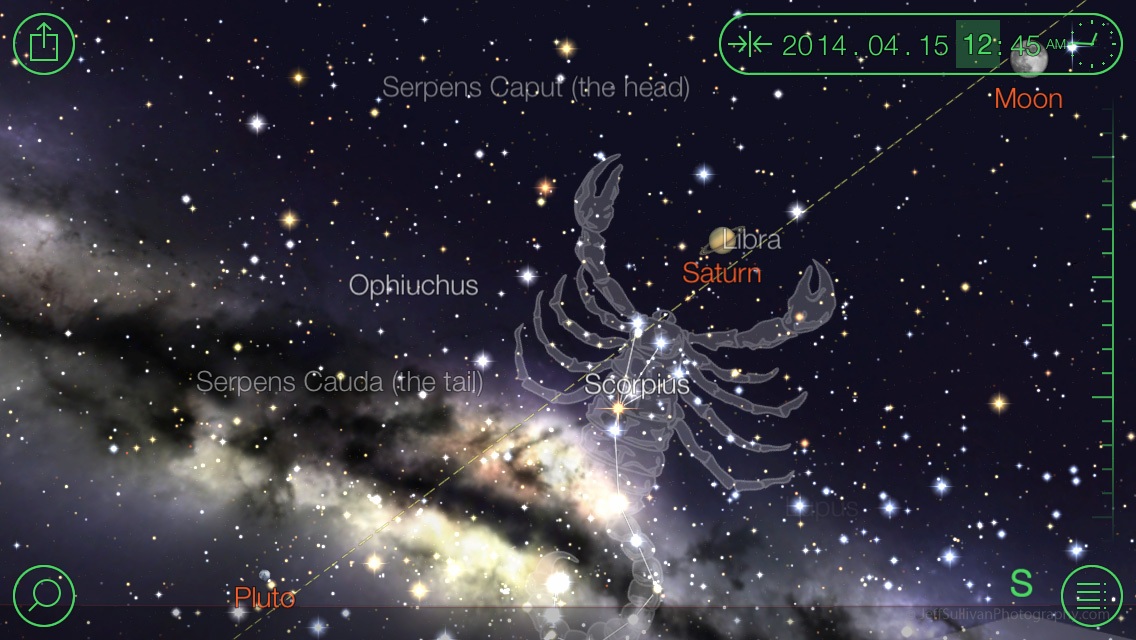 |
| Milky Way over Mono Lake Tufa Rock Formations |
The Milky Way is like a big, flat disk, with a fatter portion in the center, much like flying saucers are depicted. At least arms spiral out from the center, and our solar system is partway out on one of these arms. So while the disk of the Milky Way which we're in looks like a stripe of stars across the sky, when we're looking towards the larger center of the disk containing more stars, it's brighter. Due to the tilt of the earth's rotational axis, that bright center of the Milky Way is highest in the sky in the weeks around the Summer solstice.
As for best viewing conditions, the dark sky days around the New Moon are best, when the light of the stars in the Milky Way seem brightest and offer the greatest contrast against the dark sky background. There is an added complication as the position of the Milky Way and constellations change nightly, moving east to west further each night, until the constellations end up in the same place in the sky at the same time the following year. The constellations moving all the way around us in 12 months to return to the same place in the sky is similar to the movement they make in 24 hours, so to complete the trip around in a 12 month year, each month the constellations rise 24 divided by 12 = 2 hours earlier, 30 minutes per week. So Whatever time the Milky Way rose above your horizon last week, it'll be 30 minutes earlier this week and 2 hours earlier on the following month.
Fortunately you don't have to make a bunch of observations and calculate future times, there are apps to do the work for you. There are a number of stargazing programs out there for both interpreting the current sky and anticipating how it'll look at some date and time in the future. I use StarWalk, which provided the following display last week as the April 15 lunar eclipse was ending:

When you see that trident-shaped pattern of Scorpius coming up along the east to southeastern horizon, you know that the bright galactic center of the Milky Way is not far behind. It would have been 2 hours later, 2:45 am, to reach this position in the sky four weeks earlier.
Now let's look at other months. Note the time changes in the upper right corner as we go from early May to late May, as the moon rises roughly 90 minutes earlier after three weeks pass:

As we jump forward to dates close to the new moon dates in late June, July and August, rise time is no longer an issue as the Milky Way is already in the sky once the sky gets dark enough to see it. So June, July and August are the most convenient months to shoot it, since you won't have to wait long after sunset to start shooting. There's a term astronomical twilight to describe when the sky is fully dark, and a program such as The Photographer's Ephemeris can tell you when that is, both at night after the sun sets to the west and in the morning as the sun approaches to the east.
You'll notice that the Milky Way starts the night a little more vertical or "tilted up" in the sky each month. It's also a little further along the southeast to southwest path that the galactic center takes in the sky, so you can use that knowledge to plan specific compositions. The Galactic center also starts a little lower in the sky as you get further form the Summer solstice.
So using the new moon dates each year and a program like StarWalk, you adjust the date and time to pre-visualize what the sky looks like and determine approximately how many compositions featuring your favorite natural or man-made landmarks will look.
For more information on how to shoot the Milky Way once it's in the sky in front of you, read my prior blog post: How to Take Milky Way Photos.
To take the concept even further, you can capture sequential photos of the Milky Way and convert them into a time-lapse video like this!




No comments:
Post a Comment